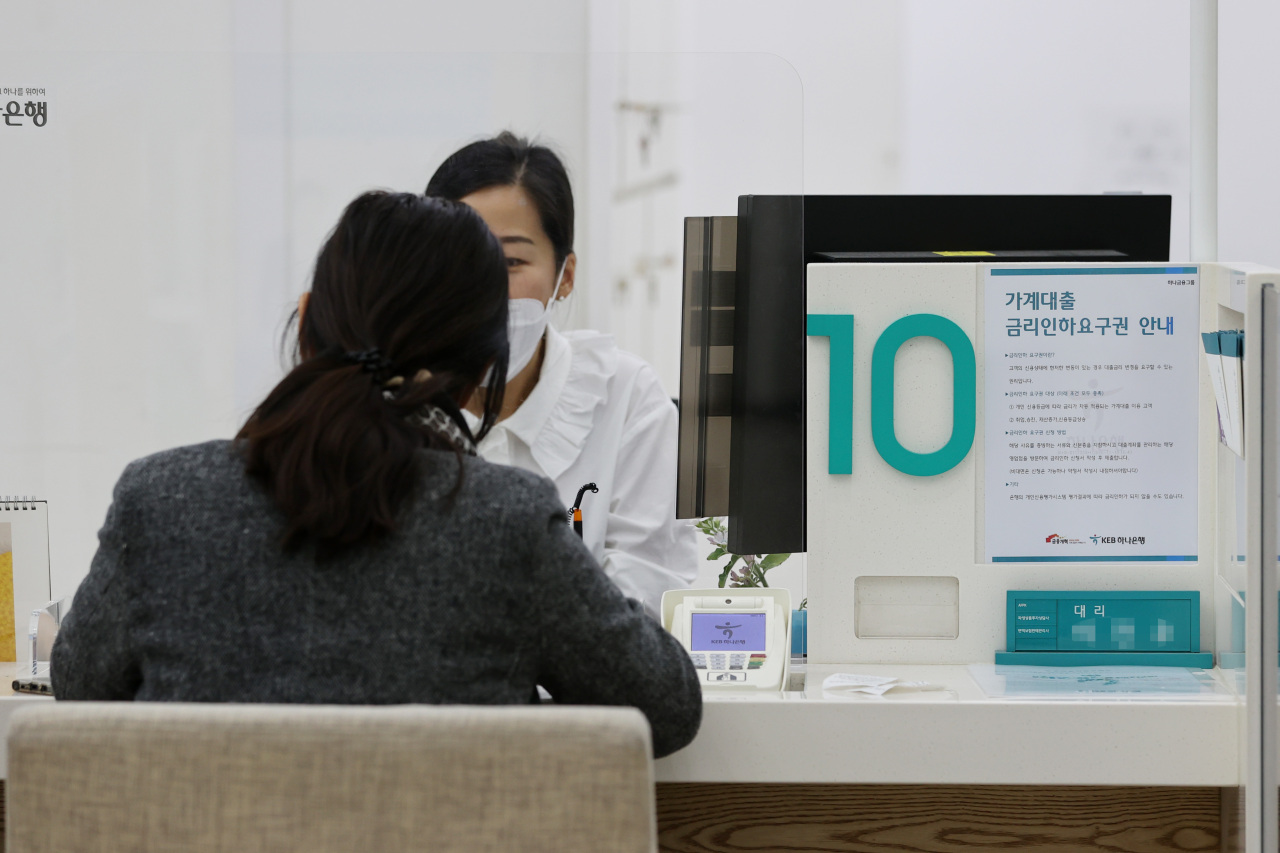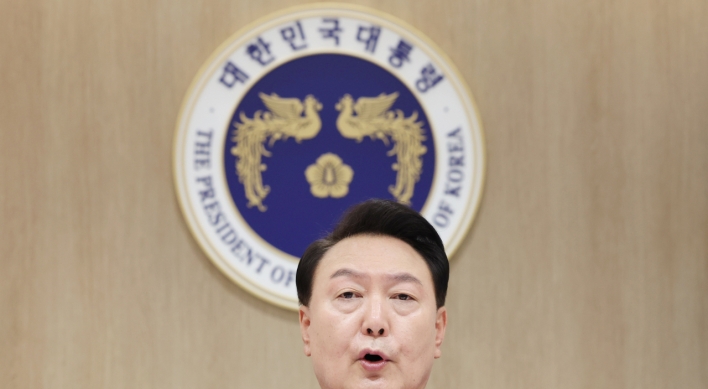Overdraft accounts surge on fear of stricter lending rules
By Jung Min-kyungPublished : Nov. 29, 2020 - 15:38

The number of South Koreans that flocked to banks to open new overdraft accounts surged in recent days, following the financial authorities’ announcement to tighten lending rules in a bid to curb the nation’s growing household debt, industry data showed Sunday.
The five major banks here -- KB Kookmin, Shinhan, Hana, Woori and NH NongHyup -- saw their customers open a combined average of roughly 5,500 accounts daily in days following Nov. 20. The figure stood at 6,324 on Nov. 20 and grew to 6,681 on Nov. 23 before falling to 5,869 on Wednesday.
The figure has been hovering above the 5,000-mark since, data showed, a number that has nearly quadrupled since Nov. 12, when the figure stood at 1,931. Nov. 12 was a day before the financial authorities announced their plans to lower borrowing limits.
This apparently translates into the growing worries of South Korean households to rush to local lenders to make as many overdraft accounts with higher borrowing limits as possible, before the rules take effect.
On Nov. 13, the policymaking Financial Services Commission and the watchdog Financial Supervisory Service announced that they would change the DSR rules on borrowers with cumulative unsecured loans of 100 million won ($90,500) or more. The DSR, basically, is annual loan payments divided by annual income.
Under such rules, a high-income individual who already has already met the quota of 100 million won of unsecured loans would be unlikely to receive additional unsecured loans if their total annual debt payments exceed 40 percent of their annual income.
Since mid-November, the five major banks have started lowering limits for their key overdraft account products designed for “high-income individuals and professionals” from an average 200 million won to about 100 million won.
The relatively low-risk overdraft accounts have conventionally been a popular choice for borrowers.
In some two-week period since the Nov. 13 announcement, the total outstanding loan extended by commercial banks here gained 2.19 trillion won to 131.69 trillion won in the cited period.
Despite the surge in new overdraft accounts, industry data also showed that the account usage rate stood an average 38 percent, which remains on the same level as the pre-Nov. 13 announcement.
As more customers opening new overdraft accounts, but not using them, industry insiders expressed concerns that while such move may seem beneficial, it is actually not.
Banks have been lowering borrowing limits based on the usage of rate of new overdraft accounts and extension of repayment date in recent months.
For example, if the usage rate remains below an average 10 percent from the period spanning from the opening of the account to three months before the maturity date, the lender would slash 20 percent off the borrowing limit before approving the repayment date extension.
By Jung Min-kyung (mkjung@heraldcorp.com)
The five major banks here -- KB Kookmin, Shinhan, Hana, Woori and NH NongHyup -- saw their customers open a combined average of roughly 5,500 accounts daily in days following Nov. 20. The figure stood at 6,324 on Nov. 20 and grew to 6,681 on Nov. 23 before falling to 5,869 on Wednesday.
The figure has been hovering above the 5,000-mark since, data showed, a number that has nearly quadrupled since Nov. 12, when the figure stood at 1,931. Nov. 12 was a day before the financial authorities announced their plans to lower borrowing limits.
This apparently translates into the growing worries of South Korean households to rush to local lenders to make as many overdraft accounts with higher borrowing limits as possible, before the rules take effect.
On Nov. 13, the policymaking Financial Services Commission and the watchdog Financial Supervisory Service announced that they would change the DSR rules on borrowers with cumulative unsecured loans of 100 million won ($90,500) or more. The DSR, basically, is annual loan payments divided by annual income.
Under such rules, a high-income individual who already has already met the quota of 100 million won of unsecured loans would be unlikely to receive additional unsecured loans if their total annual debt payments exceed 40 percent of their annual income.
Since mid-November, the five major banks have started lowering limits for their key overdraft account products designed for “high-income individuals and professionals” from an average 200 million won to about 100 million won.
The relatively low-risk overdraft accounts have conventionally been a popular choice for borrowers.
In some two-week period since the Nov. 13 announcement, the total outstanding loan extended by commercial banks here gained 2.19 trillion won to 131.69 trillion won in the cited period.
Despite the surge in new overdraft accounts, industry data also showed that the account usage rate stood an average 38 percent, which remains on the same level as the pre-Nov. 13 announcement.
As more customers opening new overdraft accounts, but not using them, industry insiders expressed concerns that while such move may seem beneficial, it is actually not.
Banks have been lowering borrowing limits based on the usage of rate of new overdraft accounts and extension of repayment date in recent months.
For example, if the usage rate remains below an average 10 percent from the period spanning from the opening of the account to three months before the maturity date, the lender would slash 20 percent off the borrowing limit before approving the repayment date extension.
By Jung Min-kyung (mkjung@heraldcorp.com)
-
Articles by Jung Min-kyung











![[KH Explains] How should Korea adjust its trade defenses against Chinese EVs?](http://res.heraldm.com/phpwas/restmb_idxmake.php?idx=644&simg=/content/image/2024/04/15/20240415050562_0.jpg&u=20240415144419)







